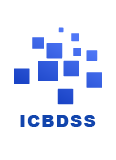

Keynote Speakers

Prof. Zhiyue BO, Executive Deputy Dean of New Era Development Research Institute, Xi’an Jiaotong-Liverpool University, China
薄智跃教授,新时代发展研究院常务副院长,西交利物浦大学
Research Area: Chinese politics and international relations
Title:Big Data and Public Policies: Advantages and Limitations
Abstract:
We human beings have lived not only in the era of big data but also in the era of “huge” big data. We have been in the era of zettabytes (one zettabyte is one trillion gigabytes) for almost a decade and will most likely be entering the era of yottabytes (one yottabyte is 1,000 zettabytes) in the near future. With such huge data available, governments at all levels in different countries could take advantage of more advanced analytics tools for public policies that are more efficient, more individualized, and more effective.
However, the governments will also need to be mindful of a number of potential limitations. There might be noises in the data that need to be cleaned; there might be occasions when violations of privacy could be an issue; and there might also be an issue of overestimating the power of big data of the past for predicting human behavior in the future.
Ultimately, a delicate balance has to be maintained between using big data for the welfare of citizens and interfering in their private affairs.

Prof. QIN HE, Capital University of Economics and Business, China
何勤教授,首都经济贸易大学,中国
Research Area: Digital Labor, AI and Labor World, Digital Economic
Title:Artificial Intelligence and Future Labor World: Challenges and Opportunities
Abstract:
With the rapid development of artificial intelligence technology, artificial intelligence is rapidly integrated into various industries and various fields of enterprise management, which brings new challenges to the macro labor market, and at the same time leads to changes in micro level organization and human resource management. However, there is a lack of systematic theoretical analysis and governance thinking on the impact of AI technology progress on the labor market and the future work world. Based on machine behavior theory and labor market theory, Performing a variety of tasks connected with future world of work: Humans in AI.Integrates human-computer dynamic evolution relationship with traditional labor relationship system theory, reshapes the work under AI empowerment and AI cooperation stage, and proposes a governance framework with "protecting vulnerable workers under algorithm control" as the basic logic and "trustworthy AI and decent work" as the goal, This paper puts forward the governance framework and strategies from three aspects: the government promotes the dynamic balance between labor and capital, implements comprehensive "labor safety" measures, designs "full spectrum" labor security policies, the industry formulates labor standards according to the "heterogeneity" of the industry, and the enterprise implements management reform based on the "humanity" underlying logic, It provides a new governance idea for the labor market reform caused by artificial intelligence.

Prof. Defu Zhang, Xiamen University, China
张德富教授,厦门大学,中国
Research Area: big data, computational intelligence, knowledge graph, deep learning
Title:Forecasting daily stock trend using multi-filter feature selection and deep learning
Abstract:
Stock market forecasting has attracted significant attention mainly due to the potential monetary benefits. Predicting these markets is a challenging task due to numerous interrelated factors, and needs a complete and efficient feature selection process to identify the most informative factors. As a time series problem, stock price movements are also dependent on movements on its previous trading days. Feature selection techniques have been widely applied in stock forecasting, but existing approaches usually use a single feature selection technique, which may overlook some important assumptions about the underlying regression function linking the input and output variables. In this study, we combine features selected by multiple feature selection techniques to generate an optimal feature subset and then use a deep generative model to predict future price movements. First, we compute an extended set of forty-four technical indicators from daily stock data of eighty-eight stocks and then compute their importance by independently training logistic regression model, support vector machine and random forests. Based on a prespecified threshold, the lowest ranked features are dropped and the rest are grouped into clusters. The variable importance measure is reused to select the most important feature from each cluster to generate the final subset. The input is then fed to a deep generative model comprising of a market signal extractor and an attention mechanism. The market signal extractor recurrently decodes market movement from the latent variables to deal with stochastic nature of the stock data and the attention mechanism discriminates between predictive dependencies of different temporal auxiliary outputs. The results demonstrate that combining features selected by multiple feature selection approaches and using them as input into a deep generative model outperforms state-of-the-art approaches.

A. Prof. Yanjun Qian, Northwestern Polytechnical University, China
钱艳俊副教授,西北工业大学,中国
Research Area:Marketing Research; Production; Business Administration; Project Management Optimization; Product Development
Title: Information Management in New Product Development
Abstract:
Facing intense competition, rapidly evolving technologies, changing customer needs, and shorter product life cycles, many firms need to develop lower cost, higher quality products at a rapid pace. Efficient new product development is essential to achieve these goals, and thus is critical to the success of many modern corporations. However, structuring new product development is challenging. Part of the difficulty is due to the complex information relationship among design activities. Unlike the manufacturing process, new product development often involves a number of decision-making activities, for example, the design of an automobile may involve thousands of engineers making millions of design decisions. Moreover, none of these activities are performed in isolation; instead, each design choice may affect many other design parameters.
Fortunately, the Design Structure Matrix (DSM) provides a concise way in describing and investigating information dependencies among design activities. A DSM is a matrix representation of a project with elements denoting individual activities which are executed in the temporal order listed from top to bottom. Sub-diagonal marks represent information input from upstream activities to downstream, and super-diagonal marks denote feedbacks from downstream activities to upstream. This study will introduce how to apply the DSM method for efficient new product development. Using a case of balancing machine development, I will first introduce how to establish the information dependencies among the activities and build a DSM. Then, I will introduce how to reorganize the interrelated activities in a DSM so as to structure new product development.

A.Prof. Heng Liu, Sun Yat-sen University, China
刘衡副教授,中山大学岭南学院,中国
Research Area: 1. Innovation, entrepreneurship and business model 2. Corporate strategy and management 3. Management research methods (empirical research, meta-analysis) 4. Institutions, culture and Chinese management issues
Title: The paradox of management tone and managerial risk-taking: Evidence from textual sentiment analysis
Abstract:
Despite textual sentiment analysis has become a rising technique in organizational research with the exponential growth of computer power and the availability of textual data, existing literature offers quite limited understanding on how management tone influences corporate decision makings. Integrated from the lens of prospect theory and expectation violation theory, we examine how management tone affects a firm’s risky behavior. The study finds that managers tend to take more risks after they release either more positive or negative tones in earning communication conferences, resulting in an overall U-shaped relationship between management tone and corporate risk taking. The study also finds that such role of tone upon risk-taking tend to be even stronger when the firm has higher reputation. Taken together, these findings contribute to expectation violation theory and corporate textual sentiment literatures by suggesting that managers’ framing of stakeholder expectation is a double-edged sword and strongly influences their risky decision-making.
